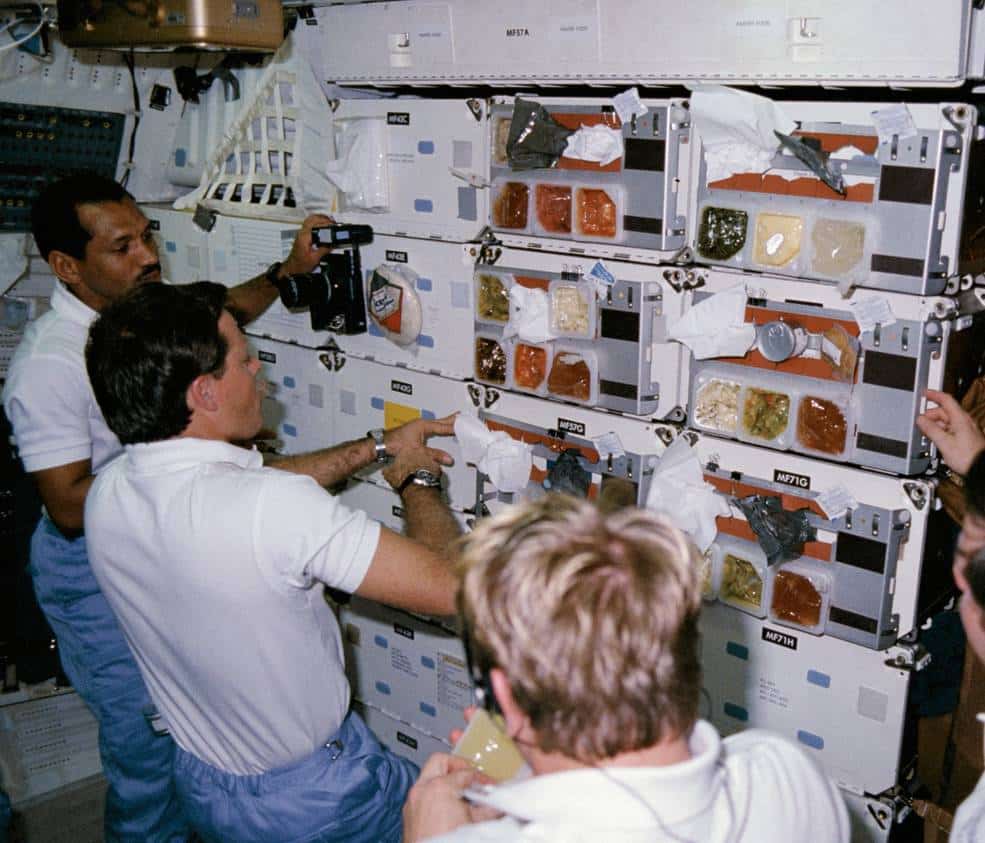A spacecraft, observatory, and laboratory, The International Space Station orbits 400 km above Earth’s surface. Launched in 1998, it’s operated by 15 countries, including the US, Russia and Japan, and represents one of the largest peace-making, cross-national collaborative projects in history.
While the ISS is not the fastest man-made object in existence (that distinction falls to the Parker Solar Probe, which reaches speeds of almost 200 km per second on its approach to the sun in 2018), it puts even F1 to shame: by orbiting the planet at roughly eight km per second, it counteracts the pull of gravity and remains in a constant state of freefall.
Weighing in at 460 tonnes, the ISS is amongst the biggest objects ever constructed made, the volume of a small football stadium. It can hold up to 10 residents at any one time: astronauts who operate the station, and various scientists from various fields. Currently, it’s housing one German, two Russian, and four American visitors, who are involved in researching everything from biotechnology to future space travel.
But, while they’re experiencing something almost entirely unique, seeing a sight few will ever enjoy, these residents are undergoing some very unusual challenges. Going to the loo can be especially fun given that it involves various vacuum tubes, suction systems, and waste compartments! And eating and drinking is certainly no picnic…
For a start, a lot of what the astronauts drink is recycled. The NASA water systems on the ISS collect moisture from breath and sweat, urine from people and research animals, and runoff from sinks and showers to keep the station hydrated. Coffee is actually a staple (or tea for the Brits when they’re up there), though – like all liquids – it’s sipped through a straw from specially designed pouches.
Freeze-dried mixes such as lemonade and orange juice are similarly available, though alcohol is utterly forbidden – not just because we wouldn’t want a bunch of tipsy astronauts making bad decisions, but also due to the fact that alcoholic compounds interfere with the station’s water-recovery systems. Nothing containing alcohol (even mouthwash or perfume) is allowed aboard!
When it comes to food, it’s all about culinary innovation out here in space. Loose crumbs and liquids can be very dangerous in zero gravity, so food is eaten on trays held in place by magnets. Freeze-dried meals and dehydrated fruit and veggies are the staples, with more than a hundred items on the menu – everything from shrimp cocktail to macaroni and cheese!
Desserts, condiments, and snacks ensure astronauts consume at least 2500 calories per day, and the cuisine often reflects the cultural make-up of the team: anything from ramen to borscht, sushi to pizza has been consumed aboard the ISS! According to former residents, none of the offerings are particularly yummy. But then astronauts eat to live, rather than live to eat; up here, its nutritional value that matters. Space: this is the final gastronomic frontier.







Click here to change your cookie preferences